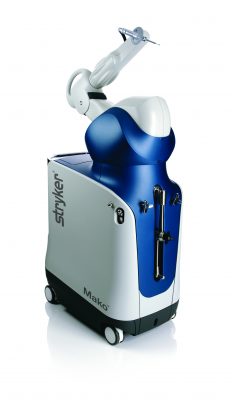What You Need to Know About Knee Pain

Your knees are involved in almost every activity you do—walking, bending and turning. If you’re suffering from knee pain, it can severely limit your ability to move and work.
The most common cause of knee pain? Arthritis. In fact, arthritis affects 1.3 million people living in Massachusetts and is also our nation’s most common cause of disability, limiting the activity of 23.7 million Americans. The most common misconception? That arthritis only affects the elderly. In reality, we see more and more very active and younger patients—Baby Boomers and Generation X—with arthritis.
Arthritis comes in three types:
- Osteoarthritis (OA). OA is a wearing-out condition involving the breakdown of joint cartilage, making the bones rub against one another, causing inflammation, pain and stiffness. Approximately 31 million Americans suffer from OA2.
- Rheumatoid arthritis (RA). RA is an autoimmune disease in which the body’s immune system mistakenly attacks the joints, causing chronic inflammation and pain. Approximately 5 million Americans suffer from RA3 and women are 2-3 times as likely to be affected as men4.
- Post-traumatic arthritis. Post-traumatic arthritis may develop after an injury when bones and cartilage don’t heal properly.
There are many treatment options available today. Non-surgical options include: physical therapy, diet, exercise, walking aids, heat/cold therapy, and medications like NSAIDS, cortisone injections, and joint fluid therapies.
There are also several surgical options. The decision for surgery is subjective, elective, and based on how much your knee pain compromises your quality of life. If you feel unhappy with your knee arthritis, surgery may be an appropriate decision.
Knee replacement surgery is indicated when the cartilage damage from arthritis is no longer manageable with non-surgical treatment options. Surgery involves placing a new surface—made of metal and plastic—on the damaged part of the knee. A partial knee replacement surgery addresses the inside (medial), outside (lateral), or kneecap (patella). A total knee replacement addresses arthritis involving all three compartments of the knee.
3 Points About Knee Joints:

1. Precision counts. Tufts Medical Center is Boston’s only facility with Mako robotic-arm assisted surgery. This technology allows for improved—and patient-specific—implant positioning and alignment, compared with traditional techniques.
2. Weight plays a role. Lose just a few pounds and you’ll take strain off your knees. Every pound lost takes four pounds of pressure off your knees.5
3. Injections are for the interim. Injections can decrease inflammation and pain. But effectiveness often diminishes over time and injections don’t definitively address your damaged cartilage.

Jeffrey Zarin, MD
Joint Replacement Specialist, Tufts Medical Center
617-636-8888, www.tuftsmedicalcenter.org/jointpain
1, 2, 3, 4Arthritis Foundation. Arthritis by the Numbers / Book of Trusted Facts & Figures. 2017; v1.2 5 Arthritis Foundation website. 2017.
This is a paid partnership between Tufts Medical Center and Boston Magazine


